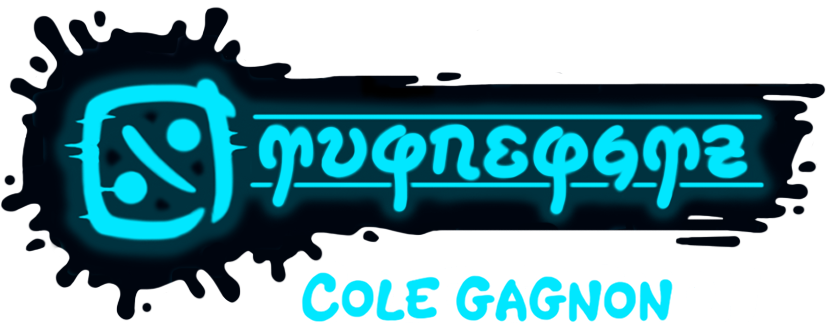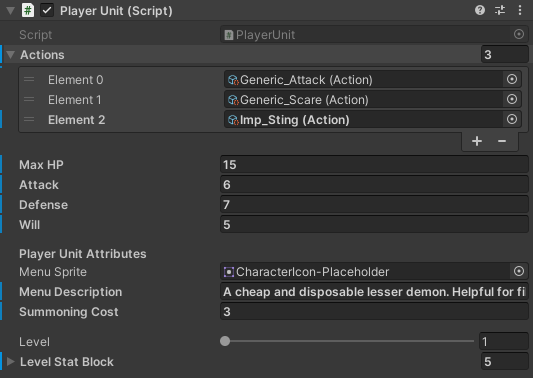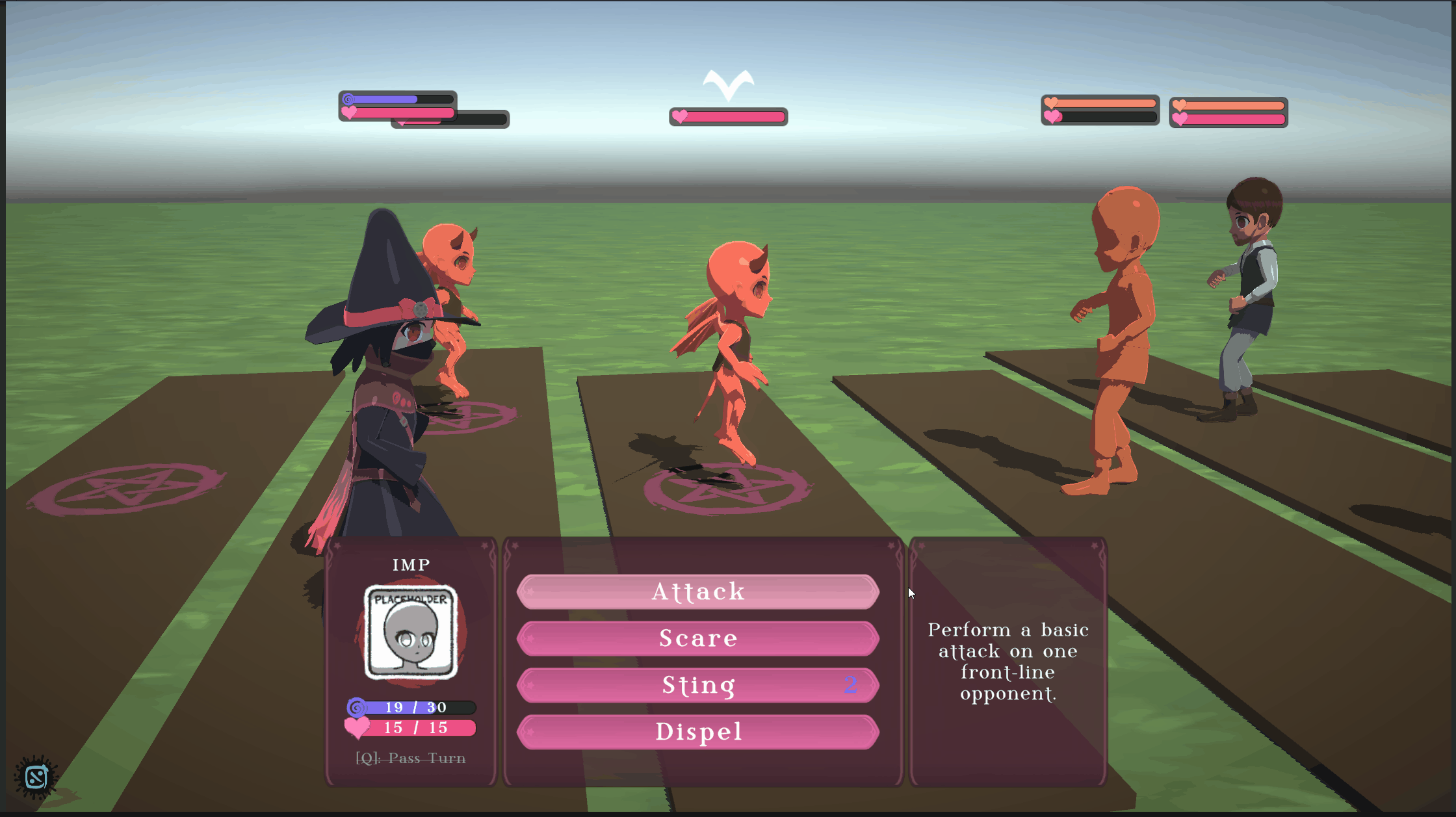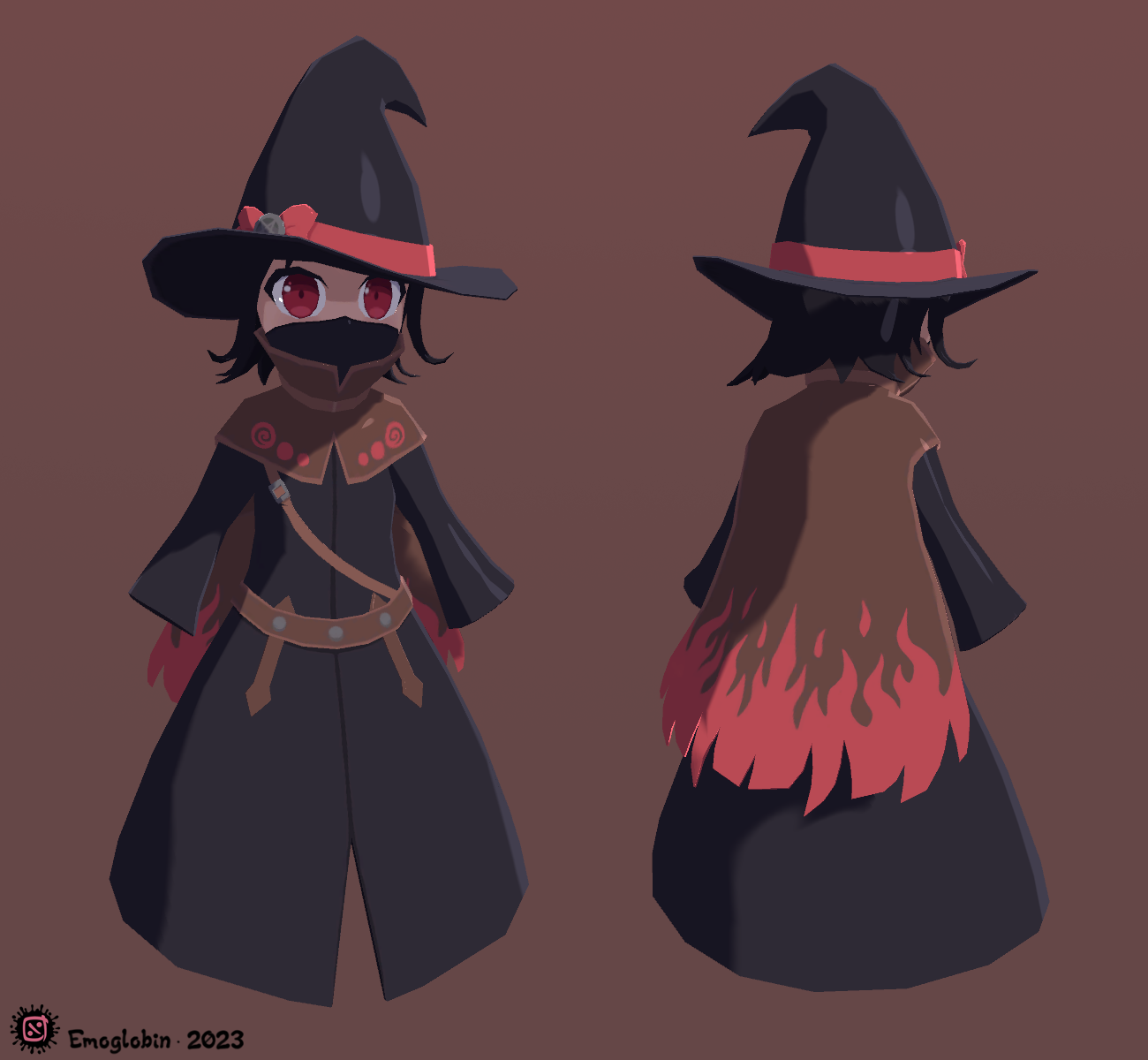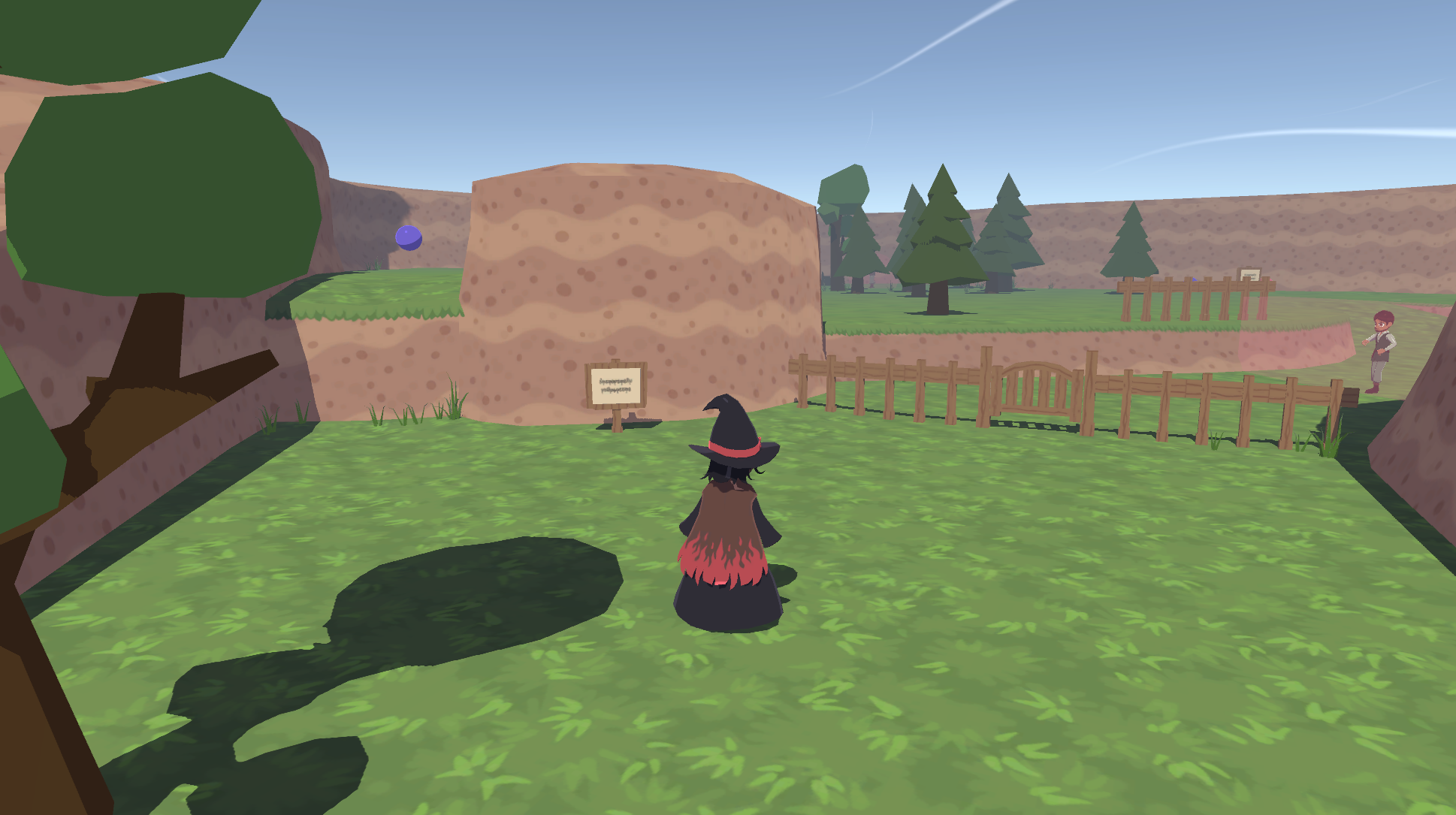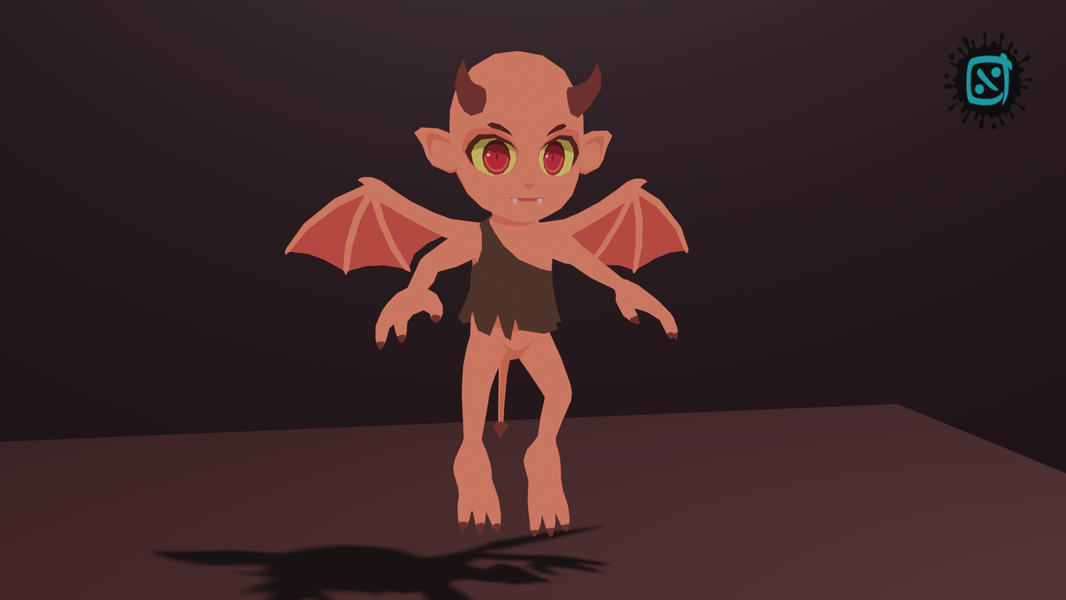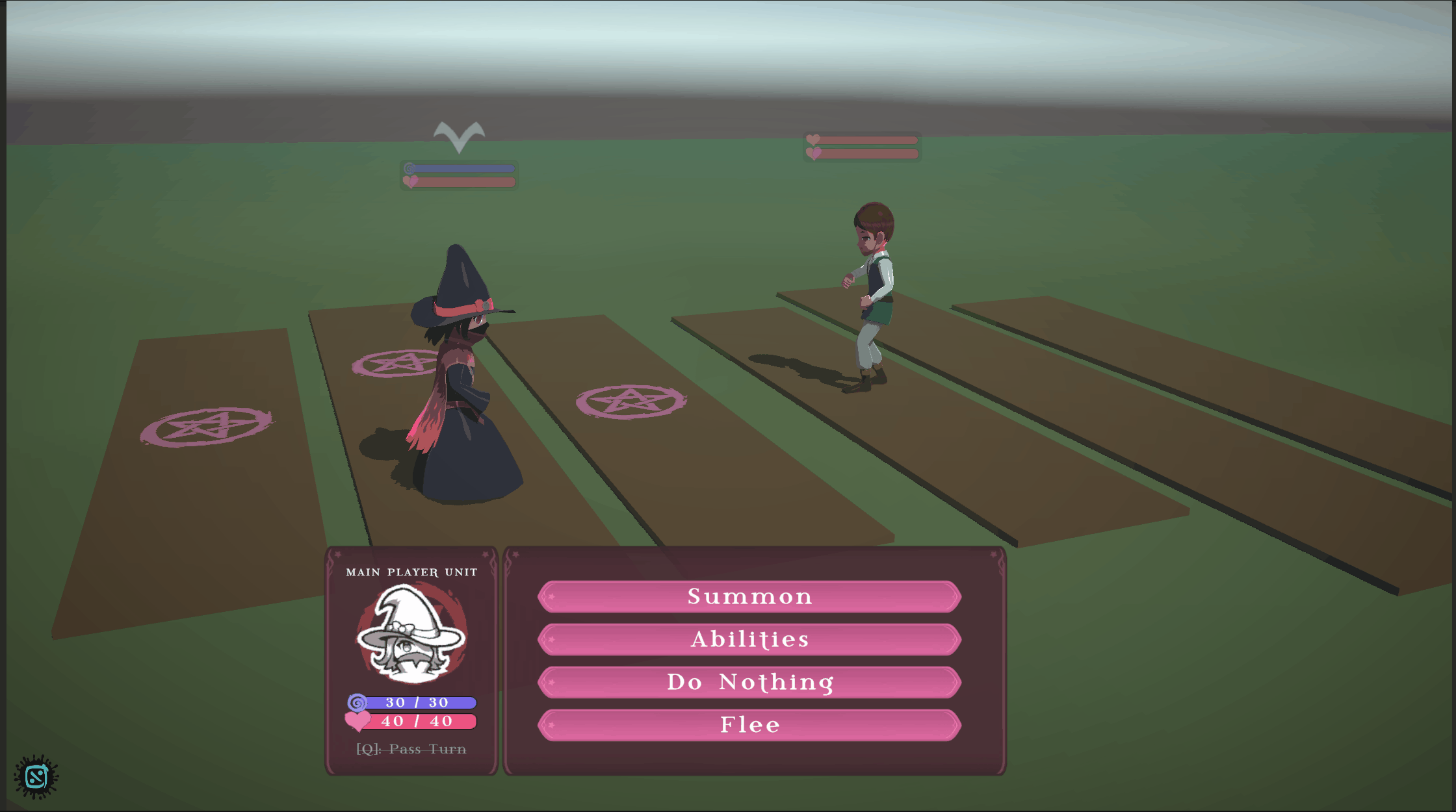SUMMARY
- Development Time: Dec. 2022 – Sep. 2023
- Technology: Unity, Blender
- Team Size: Solo Project
- My Roles: All of them
Fiendcatcher is a spooky turn-based RPG where the player, as an insane cultist commanding a party of demons, sets out on a mission to torment and terrify society. The player is challenged to strategize and summon the right party members to most effectively deal with their opponents. The demo version of the game concept showcased here is primarily focused on demonstrating complete and balanced turn-based combat mechanics. In addition to that, it includes systems for overworld traversal and dialogue.
COMBAT DESIGN + BALANCING
Since the player can choose their own party loadout on a battle-by-battle basis, my goal in designing the player’s units was to specialize them for different situations. The Hellhound’s AOEs are great against large numbers of weak opponents, whereas the Blood Slime can incapacitate strong offensive opponents with its statuses. For good measure, I also gave some enemy units special fears that cause them to take bonus fear from specific demons. There are actually seven demon units fully implemented in the game, but I decided to only give the player access to four of them in the combat demo, since I felt giving the player too many options in a shorter playthrough would be a little overwhelming.
When it comes to balancing the actual numbers, I prefer to work backwards. First, I decided generally how strong all of the units would be relative to each other; specifically, I estimated how many hits it should take each player unit to defeat each enemy and vice versa. Then I devised a damage formula that produced a range of numbers I liked, and filled in everything’s Attack and Defense stats to match my desired damage values as closely as possible. Finally, I assigned the summoning costs for player units, and experience rewards for enemy units. These values were mainly informed by the strength of the core stats, but I also bumped up some units as I saw fit for having extra abilities, status effects, and other such utility elements that weren’t reflected in raw damage output.
FEAR MECHANIC
The fear mechanic is one of the more unique parts of Fiendcatcher’s combat system, and also presented an interesting design challenge for me.
Giving the player a second option to deal with enemies by scaring them into surrender was a very early idea, and I felt it worked well with the tone I was going for, so of course, I went ahead and tried it. It was only after I implemented it that I found it added little strategic depth. From a gameplay perspective, fear was basically just a second enemy health bar, scaring abilities worked in mostly the same way as physical attacks, and thus, there was rarely any reason to choose to use one over the other. For some time, I played around with the idea of having different battle rewards and other long-term consequences for killing versus scaring enemies, even drafting ideas for possible different endings at one point. But this didn’t solve the root problem. I wanted fear to play an important part in the strategy of the game, and for that to happen, I needed to find a way to meaningfully differentiate it from ordinary damage.
Eventually, I landed on the idea of introducing dynamic fear defense. Realistically, one would expect that enemies should be most confident when a fight starts, and as they come closer to losing, their resolve should weaken and they should become more partial to running away. Based on this assumption, I added a hidden fear resistance stat for enemies that decreases as scary things happen in combat. This resulted in fear abilities being very weak at the beginning of an encounter, but very effective at quickly picking off the last one or two enemies at the end. With this change, I improved not only the fear system, but also the overall pacing of encounters! Awesome!
TECH ART
As explained before, the main focus of this demo was the combat system, but another major goal I had when I began working on Fiendcatcher was to teach myself a wider range of 3D art skills. I made my own character models and animations, my own VFX, and the whole game uses a custom toon shader graph. Some of the environment art assets were sourced from the Asset Store to save time on level building, but that’s about it. Although there are definitely still lots of placeholder assets to replace and lots of visual polish to add before any full release, I think I’ve done a pretty good job conveying my intended visual style with what I have so far.
